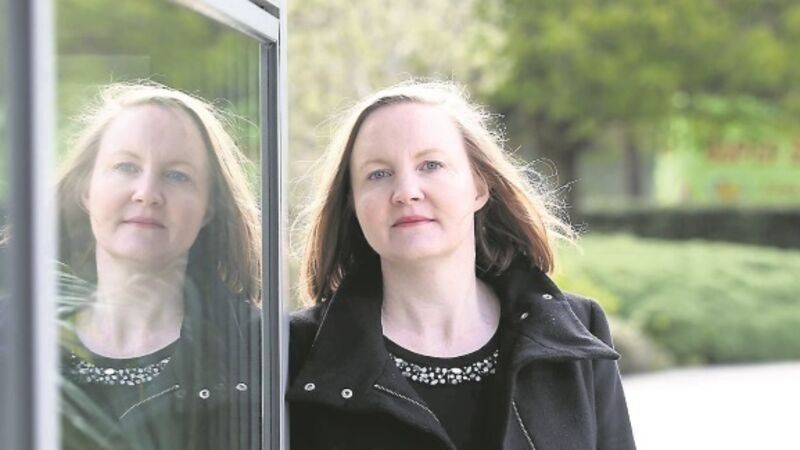New campaign hopes to tackle chronic pain through communication

I was desperate, I’d have tried anything. I came home from the spinning class and couldn’t get out of bed for two days
“It feels like somebody has got their two fists balled up and they’re kneading into my back and hip. When it’s very bad, it’s like somebody’s sticking hot needles into me.” Niamh Nestor, student advisor at UCD’s School of Veterinary Medicine, has no problem describing the constant lower back pain she has suffered since 2011. But new research shows over half of people living with chronic pain in Ireland find it difficult to describe their symptoms — so 26% delay discussing their pain with their doctor. Recently launched, the mypainfeelslike campaign has a website (www.mypainfeelslike.ie), a questionnaire — a tool to enable communication between patients and their doctors — and a series of images that visually interpret pain symptoms such as burning, stabbing and crawling under the skin. These images are on display around Dublin and in GP surgeries countrywide.
The pain in 39-year-old Niamh Nestor’s lower back and buttocks first struck while she was writing her PhD in Sociolinguistics in 2009. It continued on an on/off basis until 2011 when it became constant. “I thought I must have sat badly. People said ‘maybe you have fallen arches. Maybe it’s your shoes’. I was trying to sit properly, tuck my stomach in. I never wore high heels.”
The then 32-year-old went to a GP but got no joy. “He said ‘everybody has back pain. I see 100 people a week with it in my surgery’. He asked me to touch my toes. I had very debilitating pain but I could do that. He said ‘you’re a young person, do a bit of exercise, you’ll be fine’.” Frustrated at not being taken seriously, Niamh attended a female GP, who — in contrast to the first doctor — put the pain down to her getting older. “She said ‘you’re 32. In their 30s, people start slowing down and getting aches and pains. What’s going on is you’re getting older’. But she advised me to do Pilates and she was right about that — it did help.”
But the pain didn’t go. A third doctor told Niamh her problem was due to stress. “I knew stress wasn’t causing it. The pain was the same all the time, even on days when I was fine about the PhD.” When the pain attacks worsened in intensity in 2010, Niamh could sit for 40 minutes at a time. “Then I’d be in agony. I’d have to get up and move around or lie on the floor and do some exercise.
By early 2012, it got so bad I could only sit for five minutes. I’d be typing, squirming in the chair. I tried typing in bed.” Firmly believing exercise would cure her, she went on an exercise bike, did intense cardio and went to a spinning class. “I was so desperate, I’d have tried anything. I came home from the spinning and couldn’t get out of bed for two days.”
Her mum, Rita, declared “this isn’t normal” and took her to the family GP in their native Co Mayo. “He said ‘you’re only 35, you’re not old and people don’t get back pain because they’re stressed’.” MRI showed a bulge in one of Niamh’s discs. “Finally, there was a root identifiable cause. I wasn’t demented. I was so relieved.” Now on a pain management plan, Niamh takes daily medication.
Acupuncture has helped and she continues to find Pilates helpful. On a scale of one to 10, her pain is worst in the mornings, when it’s a five. Otherwise, it’s about a two or three. “It’s there all the time. When I pay attention, I realise ‘yes, there it is’.” The pain is manageable but it continues to impact her life.
“If I’m anywhere, like at a wedding, a work meeting, the cinema, I know immediately if I’m going to be able to sit in the chair [provided]. A bad chair is one where the back is lower, where the seat is slanted backwards. It has to have a full back and have me supported upright.” Niamh can’t stand for the length of time it takes to peel carrots. She has to refuse her small nieces’ and nephews’ requests to be lifted up. Pre-pain, she used to run and go to the gym. “If I run now, I’m in agony. I’ve gotten very unfit.” She has re-learned how to sleep on her side. “I loved to sleep on either my back or tummy. I can’t now. I sleep on my side with my knees pulled up. I rarely get a full night’s sleep.”
She feels lucky her job allows mobility. “I’m always moving between various offices. I’m not locked to my desk.” She hopes — in a disbelieving kind of way — that one day the disc in her back might un-bulge. Her consultant tells her to be realistic.
“He says I must appreciate there will be some pain all the time.”
- The mypainfeelslike campaign — a collaboration between Grünenthal Pharma Ltd and Chronic Pain Ireland — is supported by Multiple Sclerosis Ireland and The Parkinson’s Association of Ireland.
Visit www.mypainfeelslike.ie.










